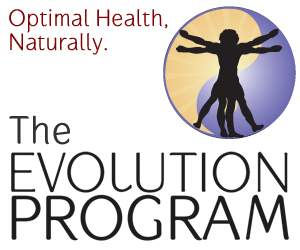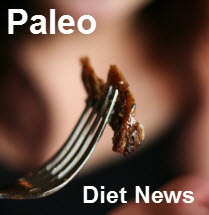Paleo diet or ‘caveman’ diet gains traction
In spite of controversy and a poor ranking earlier this year by the US News and World report Diet rankings (the Paleo diet ranked dead last), the Paleo diet or caveman diet is gaining traction and popularity. More and more people are looking into this way of eating and living and are starting to follow at least some of its guidelines.
A growing number of adherents to the so-called “caveman” diet contend that a return to the hunter-gatherer foods of the Stone Age — heavy on meats, devoid of most grains — could alleviate problems like obesity, type 2 diabetes and many coronary problems.
The Paleo diet movementis backed by some academics and fitness gurus, and has gained some praise in medical research in the US and elsewhere even though it goes against recommendations of most mainstream nutritionists and government guidelines.
Loren Cordain, a professor of health and exercise science at Colorado State University, said he believes millions in the United States and elsewhere are following the Paleo diet movement, based on sales of books such as his own and Internet trends.
“It was an obscure idea 10 years ago, and in the last two to three years it has become known worldwide,” Cordain, one the leading academics backing the Paleo diet, told AFP.
The basis for the Paleo diet is that adherents believe that humans evolved into modern humans as hunter-gatherers. We would have eaten more nutrient dense foods like that promoted development of a larger brain and better health. Promoters of the diet, like Dr. Cordain, say we are virtually the same creatures as we were 10,000 years ago.
“It’s intuitive,” Cordain said. “Obviously you can’t feed meat to a horse, you can’t feed hay to a cat. The reason for that is that their genes were shaped in different ecological niches.”
Many studies have found benefits from following the Paleo diet:
….. peer-reviewed research has shown the Paleo diet better than the Mediterranean diet, US government recommendations and diets aimed at controlling adult diabetes.
One study published in the Journal of Diabetes Science and Technology showed a Paleolithic diet “improved glycemic control and several cardiovascular risk factors compared to a diabetes diet.”
A Swedish study published in the Journal Nutrition and Metabolism found that a Stone Age diet is “more satiating per calorie than a Mediterranean-like diet,” making it something to be considered in fighting obesity.
The controversy surrounding the Paleo diet comes from the nearly total elimination of grains, legumes and dairy products. Many people still believe that these foods are essential and actually required for good health.
Perhaps the best example of a Paleo diet success is 74-year-old Art De Vany:
…. former economics professor who promotes vigorous workouts and wrote a 2010 book, “The New Evolution Diet: What Our Paleolithic Ancestors Can Teach Us about Weight Loss, Fitness, and Aging.”
“Our forager ancestors sought out high-energy (meaning high-calorie, high-fat) foods that could be obtained at the lowest energy cost,” De Vany says in his book.
“We began getting heavier and developing new diseases once we ceased to be hunter-gatherers and instead became farmers — or more specifically once we started eating the food we grow rather than gathering food.”
There are certainly detractors who do not believe that the Paleo diet is healthy or sustainable because of our current lifestyle choices. However the Paleo diet is not just a diet, but a lifestyle. Those who choose to follow it generally start to become more active.
Marion Nestle, professor of nutrition, food studies, and public health at New York University, told AFP that the Paleo diet “would not be appropriate for today’s sedentary lifestyles.”
Nestle and others also dispute some of the historical claims of Paleo diet advocates. “The claim that half the calories in the Paleolithic diet came from meat is difficult to confirm,” she said.
In a research paper, Nestle said the life expectancy of Stone Age man was around 25 years “suggesting that the Paleolithic diet, among other life conditions, must have been considerably less than ideal.”
The claim that our paleolithic ancestor lived to only 25 years of age is always bandied about. But what people fail to take into account is that life was far more dangerous then. Accident and exposure to contagious disease shortened lifespans. There were no ERs or hospitals to rush to when you broke your leg or was gored by a rhino. The point is that we did not suffer from diabetes or heart disease or other diseases. Dr. Cordain defends the Paleo diet:
….. there are modern societies of hunter-gatherers where the theory can be tested.
In these societies, “elderly people have been shown to be generally free of the signs and symptoms of chronic disease (obesity, high blood pressure, high cholesterol levels) that universally afflict the elderly in Western societies,” he says on his blog.
“When these people adopt Western diets, their health declines and they begin to exhibit signs and symptoms of ‘diseases of civilization.’”
Cordain acknowledges that because of the way society has evolved, it is impractical to feed the world with Paleo diets because many societies have become dependent on cereals.
But he says it can be successfully used in many Western countries, and argues that despite jokes about the Stone Age, mainstream nutritionists will come around to his conclusions. Read the full article here…..
Best line of the article? “This is not a fad, this is not Fred Flintstone, this is the wave of the future,” he (Dr. Cordain) said.”
I like controversy. For me it means that there is some truth in the matter. The more people fight it, the more truth it may contain. Since the Paleo diet has gained traction and more and more people are following it, do you think that there may be some truth to it?
If you found this article useful, please click the ‘LIKE’ button below to share on Facebook. We also invite you to leave comments, and join the Paleo Diet News discussion!






didn’t know that the nuts are at the top of the pyramid
Nuts are at the top because they have the same anti-nutrients as grains. They are seeds, just like grains and have the same protections. For many people nuts are a problem, just like grains. So nuts are included but in small quantities. Literally a couple of handfuls per day. If you want to eat nuts the best thing to do is to soak them in salted water, then dehydrate them. They become a lot easier to eat.
Thanks for your comment Alex!
Hurrah! Finally I got a website from where I be capable of truly take valuable data concerning my study and knowledge.
Using the limited diets of our ancestors — limited by the availability of foods — as a guideline for the perfect diet today? Our ancestors did not have nutrition science. We do.